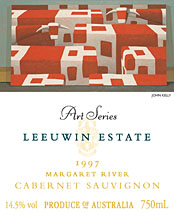 I received this wine as a sample for tasting. I’ve had Yarden before and enjoyed it, but that was a long time ago – before I had really started learning about wine.
I received this wine as a sample for tasting. I’ve had Yarden before and enjoyed it, but that was a long time ago – before I had really started learning about wine.
Bright gold in color. Nose of butter, honey, hazelnut and cream. Woodsy on the palate, with candied apple, tropical flavors and rounded creamy tones. Slight bitter astringency from oak tannins, a hint of copper penny minerality and a lingering finish of Golden Delicious apple.
 I was hoping that this might pair well with maple-glazed roast pork loin with rosemary that I had planned for that evening, and I whipped up some creamed spinach and creamy polenta with garlicky mushrooms. I rarely prepare Cooks Illustrated recipes, as they are usually complicated despite their relative perfection. This pork loin, however, looked quite simple and seemed to result in a minimum of pans to clean. Of course, I mucked that up for myself by making those two side dishes, but there you are.
I was hoping that this might pair well with maple-glazed roast pork loin with rosemary that I had planned for that evening, and I whipped up some creamed spinach and creamy polenta with garlicky mushrooms. I rarely prepare Cooks Illustrated recipes, as they are usually complicated despite their relative perfection. This pork loin, however, looked quite simple and seemed to result in a minimum of pans to clean. Of course, I mucked that up for myself by making those two side dishes, but there you are.
 The Chardonnay took the pork easily, and the rosemary was felicitous, but the maple syrup glaze brings a candied element to the wine. The wine was divine with the creamed spinach; creamy flavors met buttery wine, and the spinach tasted clean but without bitterness. The polenta was an interesting pairing; the oak tannins quarreled with the corn flavors, but the parmesan was oddly OK with it all. It was kind of like the stereotypical Italian family, where yelling is the norm but no one takes it wrong.
The Chardonnay took the pork easily, and the rosemary was felicitous, but the maple syrup glaze brings a candied element to the wine. The wine was divine with the creamed spinach; creamy flavors met buttery wine, and the spinach tasted clean but without bitterness. The polenta was an interesting pairing; the oak tannins quarreled with the corn flavors, but the parmesan was oddly OK with it all. It was kind of like the stereotypical Italian family, where yelling is the norm but no one takes it wrong.
The Galilee region of Israel is the northernmost wine appellation in the country, and the coolest growing region. The Odem Vineyard has been farmed organically since 1998, and is located at an elevation of slightly under 4,000 feet.
Israel, of course, has been making wine since time immemorial. One big blip in this millenia of history was when Baron Edmond Rothschild aided a group of Jewish immigrants to Israel in 1882 by sponsoring their attempt to found a winery. They struggled for a while, but in the end Rothschild built two wineries in Israel. His son donated the wineries back to the growers cooperative in 1957.
Israeli vineyards started modernizing in the 70s, and now owe more to California than they do to France; this Chardonnay is certainly testament to that. Golan Heights Winery, which produces Yarden as well as two other labels of wine in Israel, is one of the houses that’s lead the charge to bring the entire industry up to world standards. I’d say they’re there.



